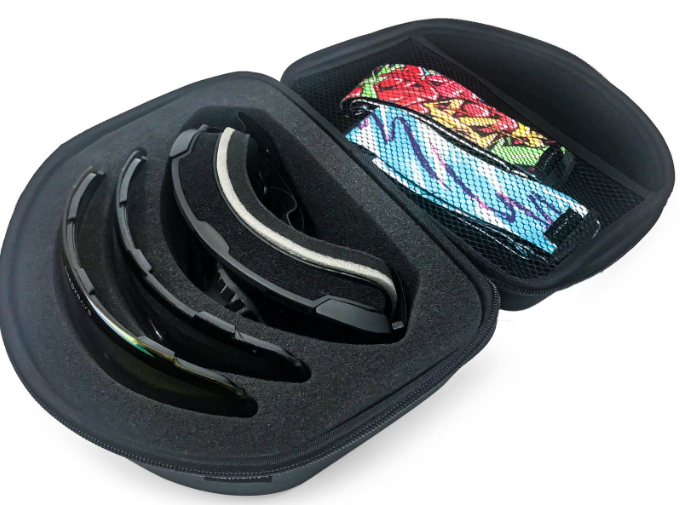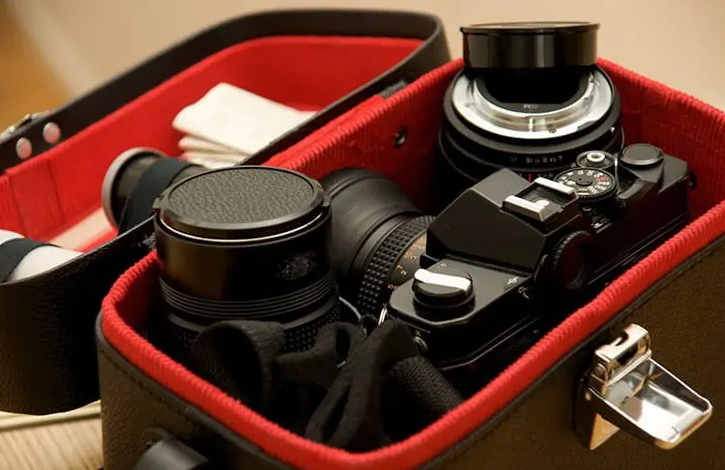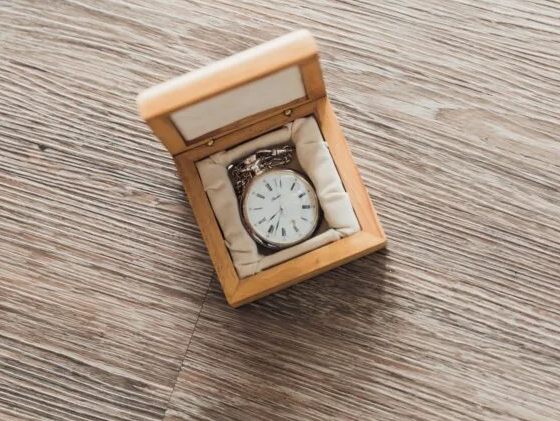A ski goggle case is a protective storage solution designed specifically for ski goggles. It safeguards the goggles from scratches, impacts, and environmental factors, ensuring longevity and clear vision on the slopes. Modern cases often feature additional compartments for accessories and are made with durable materials to withstand travel and outdoor conditions.
Table of Contents

Introduction of Ski Goggle Case
Goggle cases play a critical role in preserving the clarity and longevity of our ski goggles. Not only do they protect the lens from scratches, but they also shield it from external contaminants. Here, we’ll delve deeper into the technicalities, specifications, and crucial details of ski goggle cases.
Material and Design
The choice of materials greatly influences the durability and effectiveness of the goggle case. Most high-end cases often use a combination of polycarbonate and nylon, offering a balance between strength and flexibility.
- Polycarbonate: A material renowned for its high impact resistance, used primarily in the outer shell.
- Nylon: Offers flexibility and is often utilized in the inner lining to cushion the goggles.
Specifications and Size
Manufacturers typically offer cases in a range of sizes to accommodate various goggle designs.
- Standard Size: 8 inches in length, 4 inches in width, and 5 inches in height.
- Oversized: 10 inches in length, 5 inches in width, and 6 inches in height.
Functionality and Features
An effective goggle case should be easy to use, lightweight, and yet offer comprehensive protection.
- Ventilation: Modern cases incorporate mesh designs that provide airflow, reducing the likelihood of moisture build-up.
- Zipper Quality: A crucial component, usually tested for at least 10,000 zips and unzips.
- Pockets: Some cases offer additional pockets, useful for storing spare lenses or cleaning cloths.
Cost and Value
The price of a ski goggle case can vary significantly based on the brand, materials, and additional features.
- Budget Cases: Ranging from $10 to $20, these offer basic protection.
- Mid-Range: Positioned between $20 to $40, they often provide added functionalities like ventilation and extra pockets.
- High-End: Priced at $50 and above, these cases are typically from renowned brands, constructed with the best materials, and often come with added warranties.
Lifespan and Quality
A good quality ski goggle case should ideally last several seasons.
- Average Lifespan: With regular use, a case should last between 3 to 5 years.
- Factors Influencing Lifespan: Exposure to extreme temperatures, overstuffing, or frequent rough handling can reduce the case’s longevity.
Environmental Considerations
Modern manufacturers are increasingly conscious of the environmental impact of their products.
- Eco-friendly Materials: Some brands have introduced biodegradable or recycled materials in their cases.

- Sustainable Practices: Reduction in carbon footprint during the manufacturing process, usage of solar-powered facilities, or waste-reduction strategies.
Types of Ski Goggle Case
Ski goggle cases come in a variety of types, each designed to cater to specific needs of the user. Understanding the different options can significantly impact the protection and longevity of your ski goggles.
Hard Cases
Constructed primarily from materials like polycarbonate and ABS plastic, hard cases provide the utmost protection against physical impacts.
- Dimensions: Commonly 8.5 inches in length, 4.5 inches in width, and 5.5 inches in height.
- Weight: On average, they weigh around 250 grams.
- Cost: Typically range between $30 to $60.
- Features:
- Sturdy zipper mechanism tested for at least 10,000 uses.
- Inner cushioning often made of foam or soft fabric to prevent scratches on the goggles.
Soft Pouches
Soft pouches are lightweight and easily portable but provide less protection compared to hard cases. They are generally made from materials like nylon or microfiber.
- Dimensions: Usually 9 inches in length and 6 inches in width.
- Weight: Approximately 50 grams.
- Cost: They’re the most economical option, priced between $5 to $15.
- Features:
- Drawstring closure mechanism.
- Dual functionality as they can also be used to clean the goggle lens due to their soft material.
Zippered Cases
A blend of protection and flexibility, zippered cases offer a middle ground between hard cases and soft pouches.
- Dimensions: Around 8 inches in length, 4 inches in width, and 4.5 inches in height.
- Weight: About 150 grams.
- Cost: Priced in the mid-range, from $20 to $40.
- Features:
- Zipper mechanism, often with dual zipper design.
- Inner padding for added protection.
- Exterior pocket for lens wipes or other small items.
Drawstring Bags
Similar to soft pouches but with a more secure closure, drawstring bags are a popular choice for those looking for quick access.
- Dimensions: Typically 9 inches in length and 5.5 inches in width.
- Weight: Roughly 60 grams.
- Cost: Usually available between $10 to $25.
- Features:
- Drawstring closure with a lock.
- Interior lining made of soft materials to prevent scratching.
Material Considerations
When considering ski goggle cases, material choice remains paramount, influencing everything from durability to protection levels. Selecting the right material can impact the longevity of both the case and the ski goggles it protects.
Polycarbonate
Polycarbonate stands out as a popular choice for ski goggle cases due to its high impact resistance and lightweight properties.
- Durability: Can withstand drops from heights of up to 6 feet without cracking.
- Weight: Typically, a polycarbonate case weighs around 200 grams.
- Temperature Resistance: Remains stable in temperatures ranging from -40°C to 125°C.
- Cost: Polycarbonate cases generally range between $35 to $60, given their robust nature.

ABS Plastic
ABS plastic provides a balance between toughness and rigidity, making it another suitable material for goggle cases.
- Durability: Resistant to physical shocks and has a lifespan of approximately 5 years with regular use.
- Weight: An average ABS case weighs about 220 grams.
- Temperature Resistance: Functions optimally between -20°C to 80°C.
- Cost: More affordable than polycarbonate, ABS cases are priced between $25 to $50.
Nylon
Often used for soft cases or the interior lining of hard cases, nylon offers flexibility and softness.
- Durability: Resistant to abrasion and can last up to 4 years with daily use.
- Weight: A nylon pouch or interior lining weighs approximately 50 grams.
- Temperature Resistance: Maintains its structure between -10°C to 90°C.
- Cost: Nylon-based cases or pouches are available from $10 to $30.
Microfiber
Mainly used for soft pouches, microfiber is gentle on goggle lenses, preventing scratches.
- Durability: Can endure daily wear and tear for about 3 years.
- Weight: Extremely light, a microfiber pouch weighs around 40 grams.
- Temperature Resistance: Works best in temperatures from 0°C to 60°C.
- Cost: Being economical, microfiber pouches range from $5 to $20.
Foam
Found as padding in many ski goggle cases, foam cushions the goggles, ensuring they remain free from impact-related damage.
- Durability: Depending on the foam’s density, it can last between 2 to 4 years.
- Weight: Adds a negligible weight of around 20 grams to the overall case.
- Temperature Resistance: Typically stable from -5°C to 70°C.
- Cost: The inclusion of foam padding can increase a case’s price by $5 to $10.
Design and Aesthetics
Design and aesthetics play a crucial role in determining the appeal of a ski goggle case. Beyond functionality, a well-designed case can become a style statement, reflecting the user’s personality and preferences.
Ergonomic Design
Ensuring that the case is user-friendly is paramount. An ergonomic design ensures that the case is comfortable to carry, easy to open, and efficient in terms of space utilization.
- Handle Position: Ideally placed at the top-center, allowing for an even distribution of weight.
- Opening Mechanism: Zipper mechanisms should have large, easy-grip pullers, ensuring easy access even with gloved hands.
- Internal Compartments: Efficiently designed to hold the goggles, with separate sections for additional lenses or cleaning cloths.
Color Variations
The color of the goggle case can be a personal statement. With advancements in dyeing techniques, the possibilities are vast.
- Popular Colors: Black, silver, and blue remain evergreen choices.
- Trendy Hues: Neon colors, metallic shades, or patterns like camouflage can appeal to younger audiences.
- Customization: Some brands offer customization, allowing users to select a unique color palette or even add personal logos.
Texture and Finish
The outer texture not only contributes to aesthetics but also provides additional grip and can influence the case’s resistance to wear and tear.
- Matte Finish: Offers a sophisticated look and tends to resist minor scratches better than glossy finishes.
- Glossy Finish: Provides a sleek appearance but might show scratches more prominently.
- Rubberized Texture: Offers an enhanced grip, especially useful in wet or snowy conditions.
Brand Emblems and Logos
Branding can significantly impact a product’s perceived value. High-end brands often invest heavily in logo design and placement.
- Embossed Logos: Offers a subtle branding approach and lasts longer, as it’s integrated into the case material.
- Printed Logos: These are more vivid and colorful but might fade over time, especially if exposed to harsh conditions.
- Metallic Badges: Found on luxury cases, these add a touch of elegance but can add slightly to the case’s weight.
Innovative Features
Design innovations can enhance both the functionality and aesthetics of the case.
- LED Lighting: Some high-end cases come with integrated LED lighting, enhancing visibility in low-light conditions.
- Transparent Windows: Allows users to view the goggles without opening the case.
- Interchangeable Parts: Some cases offer customizable components, such as replaceable handles or zipper pullers, allowing users to tweak the look over time.
Size and Fit
The primary purpose of a ski goggle case is to protect the goggles, but if the size and fit aren’t right, the case can become part of the problem instead of the solution. The correct size ensures maximum protection, convenient portability, and optimal storage.
Ensuring a Snug Fit for Your Goggles
The perfect case is neither too tight nor too loose for the goggles. A snug fit guarantees that the goggles remain stationary, minimizing the risk of damage.
- Interior Dimensions: A standard ski goggle case typically measures around 21 cm in length, 11 cm in height, and 10 cm in depth. This size accommodates most goggles without squeezing them.

- Padding Thickness: A good case has padding of at least 1 cm, ensuring a cushion against external shocks.
- Strap Compartments: Many ski goggles come with detachable straps. A designated compartment of about 2 cm width is ideal for storing these straps without folding or twisting them.
Here’s a comprehensive guide on ski goggles dimensions to help you choose the right case size.
Cases for Over-sized or Custom Goggles
Not all goggles adhere to standard sizes. Over-sized or custom goggles require special consideration.
- Custom Dimensions: Cases for over-sized goggles might measure up to 25 cm in length, 13 cm in height, and 12 cm in depth.
- Flexibility: These cases often feature adjustable compartments, allowing users to modify the internal structure as needed.
- Cost: Given their specialized nature, these cases may range from $60 to $100, depending on the material and brand.
Multi-goggle Storage Solutions
For enthusiasts with multiple goggles for different skiing conditions, multi-goggle storage becomes essential.
- Multiple Compartments: These cases can house 2 to 4 pairs of goggles, with individual compartments measuring around 20 cm x 10 cm x 9 cm.
- Weight: Considering the additional material, these cases weigh approximately 500 grams to 800 grams.
- Price: Depending on the capacity and the brand, multi-goggle cases range from $75 to $150.
- Design: Many multi-goggle cases come with transparent sections, allowing users to quickly identify the stored goggles without opening all compartments.
Additional Features
While the primary function of a ski goggle case is protection, modern cases often incorporate various additional features to increase their utility and cater to the evolving needs of skiers. These enhancements can drastically improve the overall user experience.
Ventilation and Anti-fog Capabilities
A closed environment can become a breeding ground for moisture, leading to potential fungal growth or foggy lenses.
- Ventilation Ports: Many modern cases incorporate small ventilation ports, usually measuring around 2 mm in diameter, strategically placed to ensure air circulation without compromising protection.
- Meshed Sections: Some cases feature meshed pockets that allow air to circulate while also providing storage.
- Anti-fog Agents: Some premium cases might include built-in anti-fog agents, which can reduce fogging for up to 48 hours after a single application.
- Effectiveness: Proper ventilation can reduce moisture build-up by up to 75%, ensuring that goggles remain clear and free from potential mold growth.
Explore more about goggle fogging and its impact on skiing.
Interior Pockets and Compartments
Organization within the case ensures that every accessory has its place, making retrieval easy and efficient.
- Lens Pockets: These typically measure around 18 cm x 9 cm, padded to provide extra protection for spare lenses.
- Cleaning Cloth Slot: A dedicated slot, usually about 10 cm x 5 cm, ensures that cleaning cloths are always at hand and aren’t abrasive to the goggles.
- Accessory Compartments: Small compartments for items like anti-fog wipes or lens cleaners measure around 5 cm x 5 cm on average.
Attachments and Portability Options
The ease of transporting a goggle case can significantly influence user satisfaction.
- Carabiner Clips: These small but sturdy clips can bear weights of up to 5 kg and allow users to attach the case to backpacks or belts.
- Shoulder Straps: Adjustable straps, typically ranging from 75 cm to 150 cm in length, facilitate hands-free transport. The broader sections of these straps, around 4 cm in width, ensure comfort.
- Belt Loops: Incorporated in some designs, these loops, about 5 cm in width, allow users to secure the case to their waist, making it easily accessible.
What is solar panel efficiency?
How is solar panel efficiency calculated?
Why is solar panel efficiency important?
What factors affect solar panel efficiency?
How has solar panel efficiency improved over time?
What is the cost implication of higher efficiency?
How does efficiency relate to panel size?
What is the average lifespan of high-efficiency solar panels?






